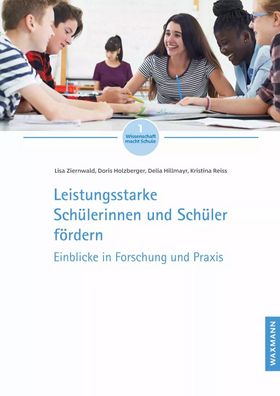In mixed-ability-classrooms, teachers face the challenge of meeting the individual abilities of all of their students though they are quite diverse. Differentiated instruction has the potential to ensure that high-achieving students do not miss out in the regular classroom. In their recently published research synthesis in the Journal of Advanced Academics, Lisa Ziernwald, Doris Holzberger, and Delia Hillmayr reviewed 49 studies to determine the impact of differentiated instruction on high-achieving students, how teachers are already using it in the classroom, and how it can best be implemented.
Differentiated Instruction: Useful, but rarely used
Differentiated instruction has the great advantage that, though it focuses on the similarities within a class, it also takes into account the different abilities of the students. Hence, it enables all students to learn as effectively as possible.
This allows even high-achieving students to receive targeted support, both in terms of academic achievement and in terms of characteristics such as motivation or interest. Teachers and students do see this benefit: They consider differentiated instruction useful. However, according to the results of our study, only few teachers use differentiated instruction to support high-achieving students, and when they do, it is usually only sporadically, whereas it is in particular the regular use of differentiated instruction that pays off. “There is a lot of potential in differentiated instruction that teachers can exploit even more in order to support high-achieving students. – With the side effect that there is a positive impact on the whole class,” says Lisa Ziernwald, who was in charge of the study.
Schools can support teachers
Our study also shows that teachers face many barriers when using differentiated instruction. Lack of time, resources, and knowledge on the teachers' side can play an important role. Organizational hurdles in terms of administration as well as a lack of flexibility are also negative factors. In addition, teachers tend to focus on struggling students in class by default.
Yet, schools can counteract these obstacles and thus facilitate the implementation of differentiated instruction. Further training measures for teachers prove to be particularly beneficial in this regard, including workshops and mentoring programs. Schools can also help teachers to collaborate with each other. If schools provide additional time and resources, they can lay the foundation for successfully supporting high-achieving students through differentiated instruction in the regular classroom.
